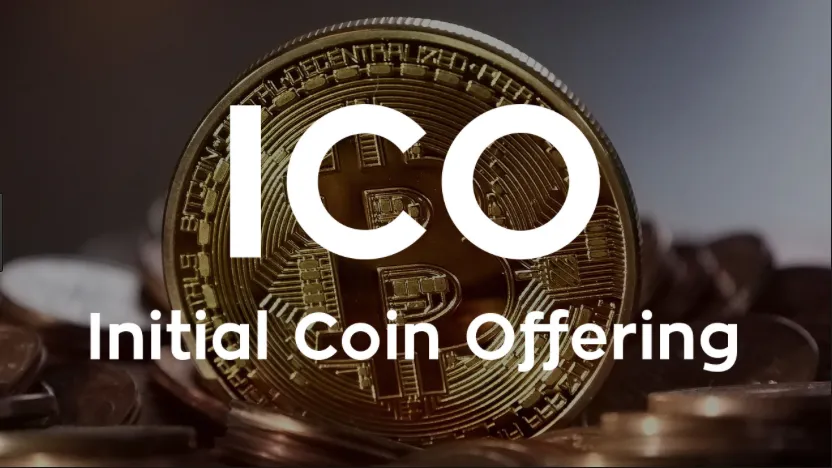
This article will be written in a true unorthodox style. As of writing, I am making an assumption that you have a basic understanding of what ICO’s are, and if not, you can scroll to the bottom half of the article which is where a brief introduction about this new financial innovation is explained.
Scam vs Innovation? You decide!
One side calls it a scam, while the other side calls it the golden goose. The view on ICOs differs from person to person, institution to institution, and even country to country, but if there is one thing that I am certain off, is that they are here to stay.
ICO is an acronym for Initial Coin Offering,a financial innovation which comes as the solution to solve problems that governments, banks and central banks have failed to solve, of which are:
1. Adequate and efficient access to funding for business at various stages of their business life-cycle
2. Decentralized /prejudice free and borderless funding
3. Liquidity for investors
4. The ease of doing business both within a countries geographical jurisdiction and abroad
Understanding the previous funding cycle:
(NB: The United States will be used simply as a point of reference and points put forth are globally applicable.)
Small business is of vital importance to a country’s sustainable economic growth and stability. In the United States, and not limited to, small business continues to play a vital role to the economy, contributing anywhere from 45%-50%(+) to the nonfarm GDP at any given period over the past 8-10 years.
Just to understate and overemphasis the value of funds raised from ICO’s alone, according to CNBC, over $1.27 Billion had been raised by Q2 of 2017. True, there has been much hype around this new way of capital crowdfunding but not because of the negative reason as comfortably and continuously stated by a minority of regulators and bankers. This hype and interest that comes from the general public does not come from social media and viral marketing as ignorantly suggested, but rather it comes from the possibility of healing an open wound left open by government.
The fundamental logic behind such behaviour can be explained by looking at the work of the late American psychologist and behaviorist, B.F Skinner (March 20, 1904 – August 18, 1990). In a few sentences, Skinner found that if behaviour was accordingly rewarded, it was strengthened, or rather reinforced, in more technical terms.
The opposite would be negative reinforcement which is when negative behaviour or unfavourable behaviour is stopped. The frustration of individuals with the current institutions is confirmed by how quickly they have gravitated to this new way of funding. Had it been anything but a pain then it would have not caused such a rapid fire. The behaviour would have been reinforced enough, to the extent that is would have been a technology that definitely didn’t make regulators lose sleep.
Let’s officially conclude that the hype surrounding ICOs is not a result of viral marketing or the public’s inability to make sound intellectual decisions, but rather from a pain that needs to be removed.
So what exactly is this pain?
The difficulty of getting funding from existing traditional institutions has largely suffocated entrepreneurship, and with the rise of ICOs, that pain is being dealt with. The number of companies being founded and funded is on the exponential rise.
The general public and more specifically entrepreneurs, and justifiably so, have felt betrayed by the operations of the current financial system. Banks which should be playing the role of funder to small business have successfully made getting financial assistance as difficult as digging yourself out of neck high sand. The global motto for central bank should be “Why make it when you can print it.”
Let’s briefly have a look at the “previous” startup funding cycle:
Stage 1: Friends, family and fools aka Triple Funding
This is the riskiest stage of funding from an investment perspective. At this stage, you’re pretty much selling dreams that are more often than not, only bought by friends and family. I call investment at this stage “Philanthropic Investments,’ or better coated, its tuition fees paid to get the needed experience in the field of entrepreneurship. One can never marginalize the importance of access to funds at this level, however, the problem of funding at this stage, is that its privileged based.
Stage 2: Banks
Banks have found that investments at this stage are too risky. True to some, but not to me. The continued risk exposure taken by banks at the expense of the general citizen has been nothing short of expletory. History has shown that existing policies and regulators have failed at protecting the public. They throw around terms such as Basel this and Basel that. Basel 1-3 have done nothing more than sugar coat existing problems that lie at the heart of policies and regulations that determine the behaviour of institutions-which is where the trust issues come from. Central Banks, the IMF, BIS and many other institutions of similar nature have been compromised when it comes to the consideration of the general person and business. The most common incident was the bank shutdown in Greece. Simply put, not only was business and instantly cut out from the financial system, they were instantly deprived access to “their” money. So mildly put, banks have largely contributed to the suffocation of sustainable business. If banks can have access to funding regardless of their continuously proven lack of capabilities to manage risk and create an environment to encourage business, they continue to get protection so they can further speculate, create financial products - called by Warren Buffet as weapons of mass destruction- a result of which even if successful, don’t create real jobs to the required and reasonable expectations.
Stage 3: Angel Investing
Angels are typically rich individuals with access or connections to funds. It’s network and geographically based, so if you don’t come from an affluent family, good luck to you.
Stage 4: venture Capital
At this stage you have a running business and are looking for professional funding. I call it that because at this stage you get more than money. You get access to experience and networks to help you to take your business to the next level. This type of funding has played an important role in society, but it also has its faults. It’s highly centralised, network based and not efficiently and effectively globally scalable, especially now that we’ve moved into an era of ,”business without borders.”
Stage 5: Initial Public offering aka IPO
This stage of funding occurs through the company’s first issuance of stock which are to be publicly offered. This type of funding allows the company is get an even larger sum of capital to expand the business. Companies that go public have the added benefit of access to cheap debt and beneficial payment terms. Another benefit for late investors is that the stock exchange provides liquidity for short to long-term investors. A t this stage, investors range from the girl/boy next door who works a part time job at a garage, to companies and government fund managers. The problem here is the road to this point. Without ease of going through the previous stages, getting to this stage maybe nothing more than something you hear about in a Finance lecture.
Now that we understand the various players involved in the business ecosystem and funding stages, lets as answer the big questions. What is an ICO?
ICOs are vehicles used by companies to raise capital while at the same time getting individuals to be part of their business ecosystem by virtue of purchasing tokens of which allows them certain business related privileges/services within the token based-ecosystem e.g exchange of data stored on the blockchain without the interaction of an intermediary, effectively directly connecting customers to service providers. Through the distribution of tokens, not only is it possible for companies to raise funds, but even better, they create network effects: creating more value as the network grows. Think of a service like Facebook/RenRen(China) which makes it possible for you to connect with friends,the value/utility of which increases directly in proportion to the number of users that are obtained and engagement. The difference being that with decentralized systems, in the Facebook example, is that you’d have ownership of your data, of which you may be able to exchange for these “tokens” of which may have monetary value outside of the token-based ecosystem. Outside of the fundraising, these tokens allow stickiness, or put simply, they encourage user engagement.
So what problem do regulators have with what seems to be innovation at its best?
Due to the distribution and ownership of these tokens, they have similar characteristic as equities, however, similar does not mean identical in the same manner that water and milk may be similar in nature but differ in their basic building blocks and the manner in which they are used (consumed).
The SEC has laws in place of which all companies that issue equities must abide by, the definition and regulation of which the definition of these equities can be found, among other places, in amended Securities Act of 1933 & Securities Exchange Commission of 1934.
One of the many key distinctions between tokens and equities is that equities represent partial ownership of a given company. Additionally, the value of equities is meant to be a reflection of the company’s performance, or expectation of it whereas with tokens, the value comes from the network effect and utilization, and based on that, the value of the token would rise or fall based on the relationship between demand and supply. Very different from equities.
The welcoming of such financial innovations from the general public comes from the lack of protection and service delivery from the financial sector. They may not have the appropriate financial lingo or literacy to stand in front of the court of law to voice their grievances,by they do know what something that is broken looks like.
The creation of the Federal Reserve System in 1913 which came as a result of the 1907 Panic provided protection to Bankers by being the lender of last resort. Where are the institutions that have directly protected the general public, because even he dollar (not limited to), has fallen in value by over 90% since the move from the Gold Standard.
The lack of protection that the general public has can be directly observed in the $1.3 trillion dollar student debt and over $12.58 trillion debt according to TIME, while at the same time having the Dow and S&P close at all-time highs.
This is a great opportunity to solve these problems. We are only at 1.0 and too much regulation too early can only cause harm. All the different stakeholder need to be heard, and they need to come to the table with the intention of creating a regulatory environment that promotes and allows the transformation of business 2.0 to its fullEST potential. Some sort of regulation should obviously be in place, but it should come out of necessity as opposed to fear.
Only if you found this blog valuable, please donate to us as we continue to advocate or blockchain and crypto technology. This will help us to reach greater mass.
bitcoin: 1HfqmGG4H7FE92N3jbiYAjBJ33tADgAPXY

Ether: 0xF5687D69e271Ed6f8D7605402B247cb3eDb4aF50

I urge to take it upon yourself to continue to educate those around you about this new era.
Ref links:
https://www.sec.gov/spotlight/equity-market-structure/equity-market-structure-advisory-committee-subcommittees.htm
https://www.sec.gov/rules/final/33-7505a.htm
http://www.sanc.org.za/pdf/Recruitment/Manager%20Client%20Services.pdf
http://www.politifact.com/virginia/statements/2010/nov/24/virginia-tea-party-patriots/virginia-tea-party-says-dollar-has-lost-98-percent/
https://www.forbes.com/sites/laurashin/2017/10/02/are-icos-for-utility-tokens-selling-securities-prominent-crypto-players-say-yes/#60c425ca34fa
https://www.cnbc.com/2017/10/02/us-stocks-fourth-quarter-trump.html
http://www.businessinsider.com/chart-inflation-since-1775-2013-1
image credit: https://www.linkedin.com/pulse/icos-netherlands-regulated-offerings-securities-effecten-de-jong
Views expressed in this article are views of the writer. This is not legal nor financial advise.